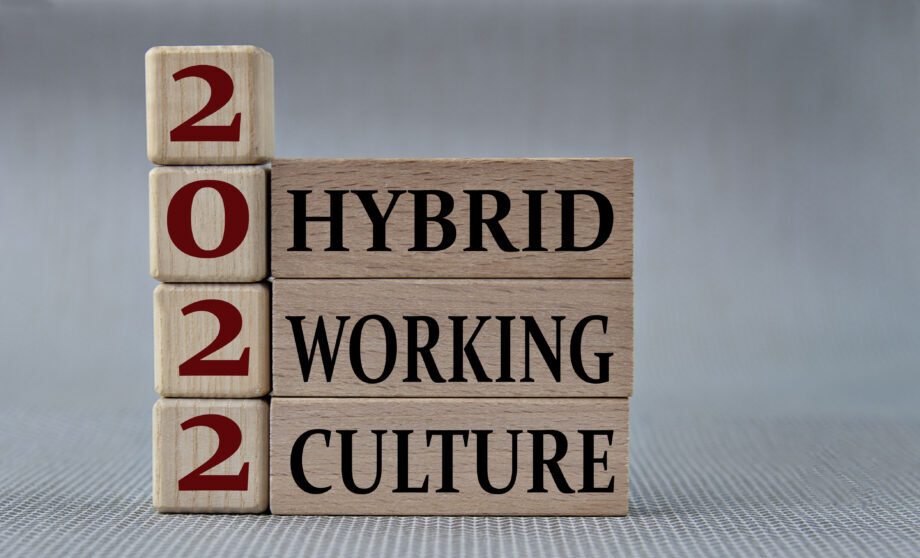Dan Berry, interim head of workplace practice at CloudStratex, discusses how hybrid working is impacting operational efficiency
The advent of the Omicron variant has been a watershed moment in the story of the pandemic, cementing the idea that restrictions, changed habits, and new workplace practices such as hybrid working aren’t going away any time soon.
This realisation has clearly been felt by Google, which is – according to recent reports – in the process of investing £730 million into a reinvigorated work environment that places a heavy emphasis on hybrid working culture.
Google’s multi-million-pound purchase and refurbishment of Central Saint Giles will include inclusive meeting rooms for the purposes of hybrid working, in addition to more spacious and partially outdoor areas that have clearly been inspired by pandemic life.
By proactively investing in this kind of undertaking, Google is leading the way in looking beyond discussions of whether hybrid working is [or is not] a practice worth pursuing, choosing instead to focus on the workplace practicalities of hybridity.
These practicalities demand urgent and comprehensive thought in order for organisations to improve, discover, or regain satisfactory levels of operational efficiency which, as we have found in our clients, may have been eroded due to hybrid working.
Can hybrid working ever be truly sustainable?
Pre-pandemic practices
Many organisations are currently experiencing a reversal of their workplace-related operational gains.
This is due to a combination of new requirements for hybrid workers and the redefinition of existing requirements – and, if such requirements aren’t met, workers simply will not work as efficiently.
By way of example, it’s worth reflecting on the pre-pandemic Fellowes Workplace Wellness Trend Report.
This survey found that an enormous 87% of workers want healthy workspace benefits, ranging from healthy lunch choices and ergonomic seating to dedicated spaces like “wellness rooms.”
There’s no reason to believe this desire has dissipated in subsequent years, but naturally employee perceptions of “healthy” will have changed in the era of COVID-19.
Today, “healthy” means “minimising the risk of infection” as opposed to “ping pong table in the break room”.
Consequently, workplaces looking to get the maximum amount of efficiency out of happy and engaged workers will need to make precisely the kinds of changes made by Google: spacious rooms and partially outdoor areas will be all the more essential in the workplace of the future, while previous visions of a healthy office may need to be overhauled.
Seamless integration
Of course, some operational gains will be made by workplaces that embrace relatively new requirements.
Ensuring hybrid workers are comfortable and happy is undoubtedly a part of the efficiency puzzle – after all, HSBC’s Future of Work report found that 77% of their respondents saw higher productivity levels among hybrid workers who clearly enjoy the home-based elements of that work, and workplaces will need to take steps to replicate that pleasure at the office.
However, it’s not just about contentment: it’s also about ensuring that workers’ flexibility isn’t constrained by the limitations of legacy technology.
Efficient hybrid work must be seamless, secure, and flexible. This has implications for the physical workplace – in Google’s case, this has been achieved by including screens in hybrid meeting rooms so that remote workers are better able to engage with their in-office colleagues, and vice versa – and the digital workplace too.
The physical and human domains will also require increased scope for the kind of spontaneous ideation and collaboration that isn’t always tenable through video calls, allowing offices to add concrete value that can’t be achieved solely through home working.
These changes to the physical workplace should not supersede the digital domain, however – seamlessness applies not only to meetings, but to the everyday activities of a given worker.
In this light, cloud services will be essential in supporting employees who need to access and collaborate on shared files with peers in disparate locations, while the likes of virtual desktops allow workers to treat devices and locations as interchangeable while ensuring that they don’t miss a work-related beat.
A complex future
Though cloud services will clearly be as vital as the kinds of physical workplace changes advocated by Google, we’re well aware that cloud is something of a minefield when it comes to efficiency, given the necessarily delicate balancing act between performance, resilience, and cost that cloud adoptees need to undertake.
In fact, our experience suggests that many organisations quickly encounter cost sprawl that needs to be addressed – and this kind of complexity has, of course, been mirrored in other aspects of enterprise IT systems, with service operations, for example, finding that ITIL frameworks can’t offer true efficiency in the face of extensive resource churn.
Moreover, cloud adoptees will need to match flexibility with security by means of robust operational resilience protocols – a failure to prevent, respond to, and recover from operational disruption can have dire consequences, as the Bank of Ireland and its recent €24.5 million fine can attest.
The impact of hybrid working, then, has implications for operational efficiency that expand far beyond the confines of physical redesigns like Google’s to encompass the physical, digital, and human domains in equal – and urgent – measure.








